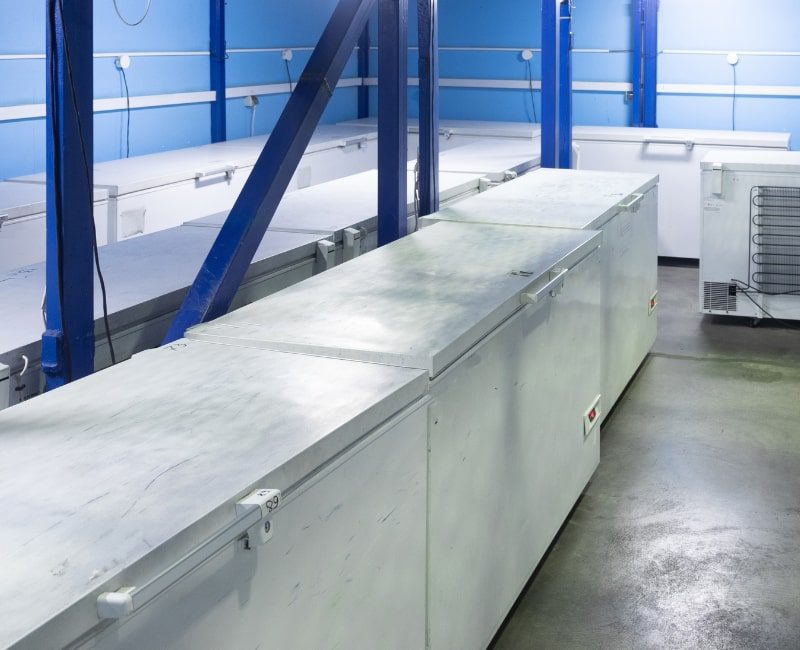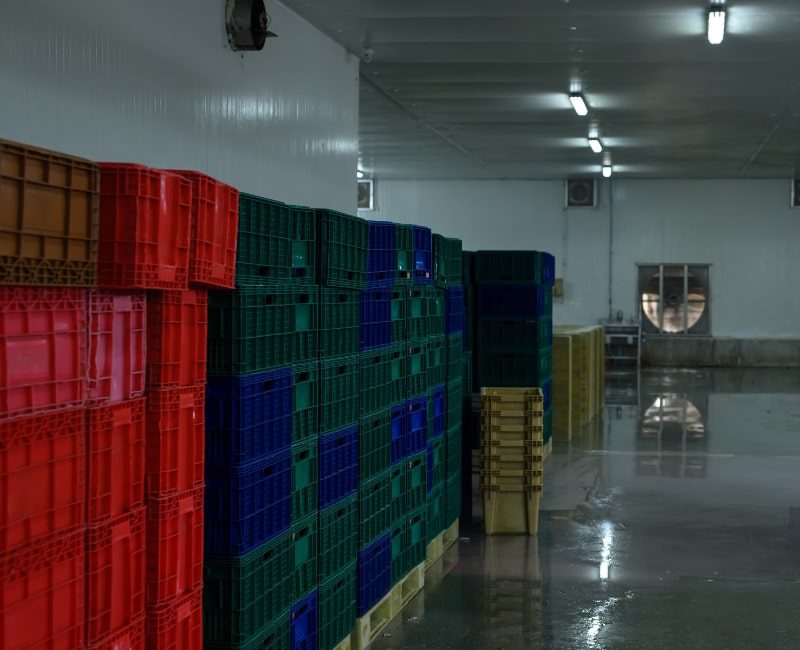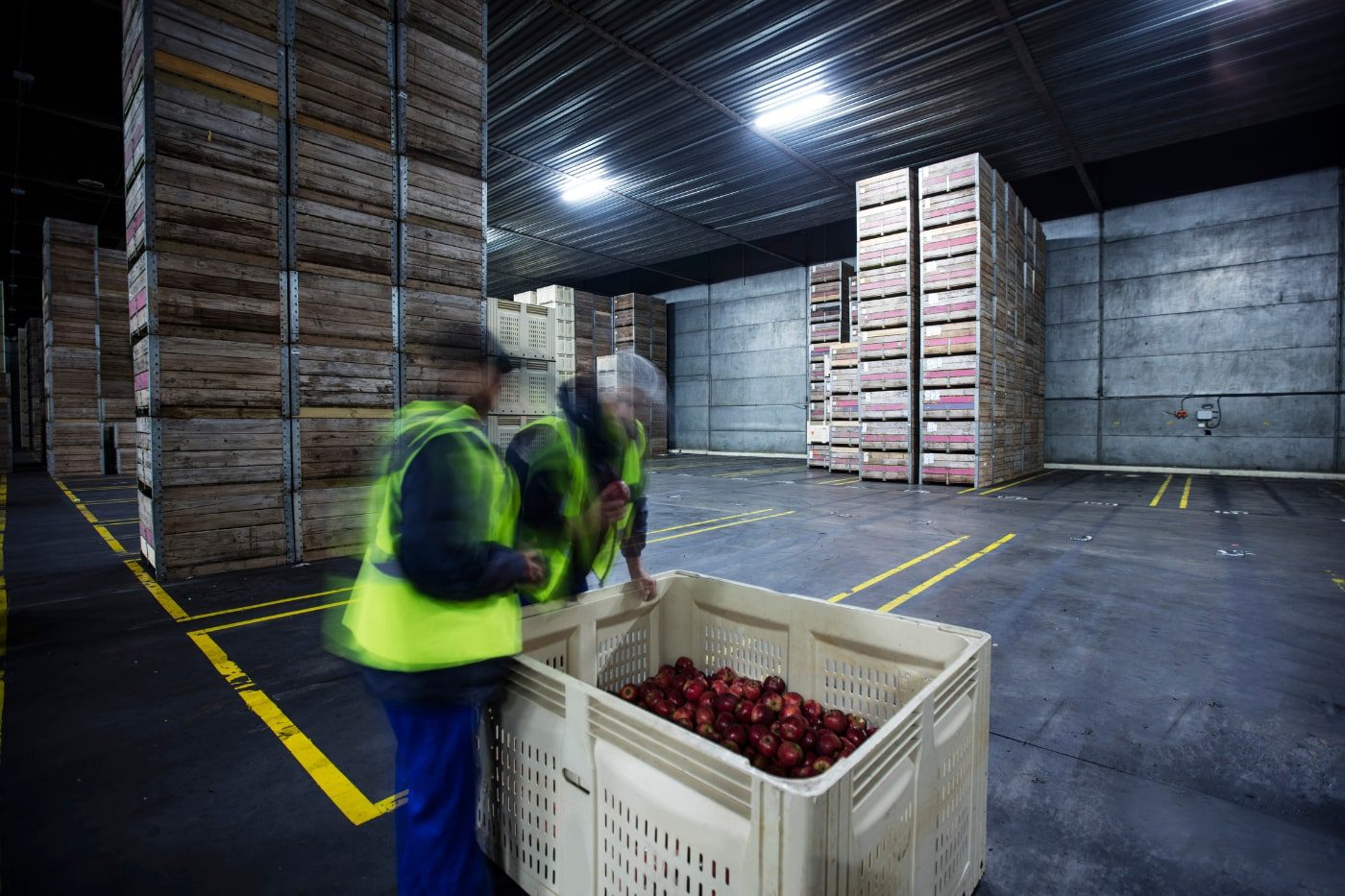Maintaining consistent cold storage temperatures during sweltering summers is no small feat. Extreme heat pushes refrigeration systems to their limits, threatening the integrity of temperature-sensitive goods.
For businesses dealing with pharmaceuticals, food, or other perishables, reliable cold storage is a necessity. Product spoilage and regulatory non-compliance can lead to significant financial losses and damage to reputation.
So, how do third-party logistics (3PL) providers ensure your valuable inventory stays cool when temperatures soar? Let’s explore the intricate systems and processes that 3PLs employ to combat heat and maintain precise temperature control, keeping your products safe and your business running smoothly.
The Science of Cold Storage
It’s not magic; it’s thermodynamics, insulation, and a whole lot of engineering.
Understanding Temperature Control
At its core, cold storage is about managing heat transfer. Thermodynamics tells us that heat naturally flows from warmer to cooler areas. During a hot summer, this means external heat is constantly trying to penetrate a cold storage facility. Effective insulation acts as a barrier, slowing down this heat transfer. Think of it like a high-tech cooler on a massive scale. Proper insulation minimizes the amount of work the refrigeration system has to do.
Air circulation is equally vital. Stagnant air can create temperature pockets, leading to inconsistencies. Fans and carefully designed airflow patterns ensure even temperature distribution throughout the storage space. This prevents hot spots and ensures every product is kept at the optimal temperature.
Refrigeration Systems Explained
Industrial refrigeration systems are the workhorses of cold storage. They operate on a closed-loop cycle involving:
- Compressors: These increase the pressure and temperature of the refrigerant.
- Condensers: Here, the hot refrigerant releases its heat to the outside air, turning it into a liquid.
- Evaporators: The liquid refrigerant absorbs heat from inside the storage space, turning it back into a gas and cooling the air.
Refrigerants are the key to this process. They are specially formulated substances that can efficiently absorb and release heat. Modern refrigerants are also designed to be environmentally friendly.
Redundancy is crucial. If a component fails, backup systems kick in. This ensures continuous operation and prevents temperature fluctuations. Multiple compressors, condensers, and evaporators working in tandem, or having backup units ready, are essential. This is especially important during peak summer months.
Cold Storage Technology and Monitoring
Digital precision is a cornerstone of modern cold storage. Sophisticated technology ensures continuous, accurate temperature management, complementing the robust physical infrastructure.

Advanced Temperature Monitoring
Modern cold storage facilities rely on a network of sensors to constantly monitor temperature. These sensors provide real-time data, allowing operators to detect and address any deviations immediately. Imagine a grid of thermometers, all reporting back to a central control system, but far more precise.
Real-Time Sensor Networks:
- Distributed sensors throughout the facility provide continuous temperature and humidity readings.
- Data is transmitted wirelessly or through wired networks to a central monitoring system.
- These sensors are calibrated regularly to ensure accuracy and reliability.
Advanced-Data Analytics:
- Software analyzes sensor data to identify trends and potential issues.
- Machine learning algorithms can predict temperature fluctuations and optimize system performance.
- Operators receive visual dashboards displaying real-time data and historical trends.
Automated Alarm Systems:
- Configurable alarm thresholds trigger alerts for temperature, humidity, or equipment malfunctions.
- Notifications are sent to personnel via SMS, email, or on-site displays.
- Alarm systems can automatically initiate backup systems or adjust equipment settings.
Comprehensive Data Logging and Compliance:
- Data logging systems record detailed temperature and humidity history for auditing purposes.
- Reports can be generated for regulatory agencies or internal quality control.
- Data integrity is maintained through secure storage and access controls.
Energy Efficiency and Sustainability
Cold storage facilities are increasingly focused on reducing energy consumption and minimizing environmental impact.
Energy-Efficient Equipment:
- Variable frequency drives (VFDs) optimize compressor and fan speeds to match cooling demand.
- High-efficiency evaporators and condensers maximize heat transfer and reduce energy waste.
- LED lighting reduces energy consumption and heat generation.
- Advanced insulation materials reduce the workload of refrigeration systems.
Smart Controls and Automation:
- Building management systems (BMS) integrate and control all aspects of the facility, including lighting, HVAC, and refrigeration.
- Demand-response programs allow facilities to reduce energy consumption during peak demand periods.
- Optimized defrost cycles minimize energy waste and maintain consistent temperatures.
Sustainable Practices:
- Use of refrigerants with low global warming potential (GWP) to reduce environmental impact.
- Implementation of renewable energy sources, such as solar panels or geothermal systems.
- Water conservation measures, such as rainwater harvesting or efficient cooling tower operation.
- Facilities are working to reduce waste and promote recycling.
- Energy audits are performed regularly to find areas of improvement.
Proactive Strategies for Operational Excellence
The most advanced refrigeration systems and monitoring technology are only as effective as the processes and procedures that support them. Operational excellence ensures that every aspect of the facility, from its physical layout to its emergency response protocols, contributes to maintaining consistent and reliable cold storage.
Facility Design and Layout
The physical design of a cold storage facility is crucial for maintaining consistent temperatures. Facility layouts are meticulously planned to optimize airflow, preventing temperature stratification. Strategic placement of air handlers and ductwork ensures even cooling throughout the storage space, and airflow studies are conducted to eliminate potential hot spots.
Proper racking and storage are equally important. Racking systems are designed to allow adequate airflow around stored products, and storage placement is optimized to minimize temperature variations. Regular inventory rotation helps prevent stagnant air and maintain consistent temperatures.
Temperature-controlled loading docks are essential for minimizing exposure to external heat, especially in areas like Indianapolis with high summer humidity. Dock seals and levelers create airtight barriers, and rapid-roll doors minimize the time docks are open, reducing air exchange.
Preventative Maintenance and Emergency Response
Proactive maintenance and robust emergency protocols are essential for continuous operation. Regular equipment maintenance is critical, with preventative maintenance schedules implemented to ensure optimal performance. Regular inspections and calibrations are performed on refrigeration systems, sensors, and other critical equipment, and meticulous maintenance records are kept for compliance and performance tracking.
Emergency backup systems are vital. Backup generators ensure continuous power supply during outages, and redundant refrigeration systems provide backup cooling capacity in case of equipment failures. Alarm systems are tested regularly to ensure they function properly.
Detailed procedures are in place to handle power outages and equipment failures. Personnel are trained to respond quickly and effectively to emergencies, and contingency plans are developed to minimize product loss and maintain operational continuity. 3PLs have plans in place to handle these issues, so your products remain safe.
The Value of a Strong Cold Chain Partner
The right 3PL provider acts as an extension of your business, ensuring product integrity and providing unwavering support. Partnering with a skilled logistics provider offers crucial advantages, especially during the challenging summer months.

Protecting Product Integrity
Consistent temperatures are the bedrock of product quality. Even slight temperature fluctuations can lead to spoilage or degradation, especially for sensitive goods like pharmaceuticals and food. Imagine a pharmaceutical product losing its efficacy due to a brief temperature spike, or a food product becoming unsafe for consumption.
Different products have different temperature requirements. A reliable 3PL understands these nuances and tailors its storage solutions accordingly. 3PLs also ensure compliance with industry regulations, such as those set by the FDA or USDA. This is vital for avoiding costly penalties and maintaining consumer trust. By adhering to strict temperature protocols and maintaining detailed records, 3PLs ensure that your products are handled with the utmost care.
Peace of Mind
Summer heatwaves can cause significant stress for businesses relying on cold storage. A reliable 3PL partner provides peace of mind during these challenging times. Proactive monitoring and maintenance ensure that potential issues are addressed before they become problems.
Having a partner who can handle the stress of extreme weather allows you to focus on other aspects of your business. Knowing that your products are in safe hands can be invaluable. It is important to have a partner who has contingency plans, and the ability to execute those plans when needed. 3PLs offer a level of expertise and infrastructure that many businesses cannot afford to maintain in-house. This is especially true for businesses operating in the Indianapolis area, where summer temperatures can fluctuate wildly.
Staying Cool Under Pressure: Ensuring Cold Storage Reliability
Maintaining consistent cold storage temperatures during extreme heat is a multifaceted challenge, demanding a blend of advanced technology and operational practices. The core takeaway is that robust cold storage solutions are indispensable for protecting product integrity during intense summer months.
Partnering with a 3PL that prioritizes temperature control provides invaluable peace of mind. A reliable partner offers the expertise, infrastructure, and proactive approach needed to navigate the complexities of cold storage, especially in regions where seasonal temperature swings can be dramatic.
At Hanzo Logistics, we offer cutting-edge blast-freeze technology and comprehensive cold storage solutions designed to meet the most demanding requirements. Our focus on precision and reliability ensures that your temperature-sensitive products remain in optimal condition, regardless of external conditions.



